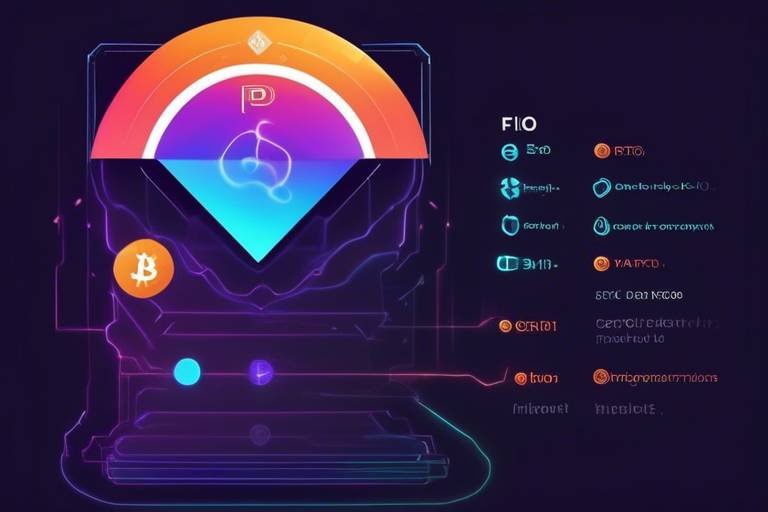Tron (TRX) - A Comprehensive Overview
Welcome to the fascinating world of Tron (TRX), a cryptocurrency that has captured the attention of investors, developers, and tech enthusiasts alike. In this article, we will dive deep into what Tron is all about, exploring its innovative technology, diverse use cases, and the market performance that has made it a prominent player in the cryptocurrency landscape. Whether you're a seasoned cryptocurrency trader or a curious newcomer, this comprehensive overview aims to enlighten you about Tron's mission to create a decentralized internet powered by blockchain technology.
Tron was founded in 2017 by Justin Sun, with the mission of decentralizing the internet and giving power back to the content creators. Imagine a world where artists, musicians, and writers can share their work directly with their audience without the interference of middlemen. That’s the vision behind Tron. By leveraging blockchain technology, Tron aims to eliminate the need for centralized platforms that often exploit creators while maximizing their profits. This is not just a dream; it’s a movement towards a more equitable digital ecosystem.
At the core of Tron lies its robust blockchain technology, designed to facilitate high-speed transactions and scalability. Unlike traditional blockchain systems that may struggle with congestion and slow processing times, Tron boasts a unique architecture that supports its ambitious goals. The platform's ability to handle thousands of transactions per second makes it a game-changer in the industry. Let's delve into some of the key features that set Tron's blockchain apart from the rest.
One of the standout features of Tron is its Delegated Proof of Stake (DPoS) consensus mechanism. This innovative approach not only enhances transaction speed but also ensures network efficiency and decentralization. In a nutshell, DPoS allows TRX holders to vote for a limited number of "super representatives" who validate transactions and maintain the network. This system significantly reduces the time it takes to confirm transactions, making Tron a highly attractive option for developers and users alike.
Tron's node structure plays a crucial role in supporting its DPoS system. With a network of super representatives and regular nodes, Tron ensures that its blockchain remains secure and efficient. Each node contributes to the overall performance of the network, creating a resilient infrastructure that can withstand various challenges. This decentralized approach not only enhances security but also fosters community participation, allowing users to have a say in the network's governance.
When it comes to transaction speed, Tron is in a league of its own. The platform can process over 2,000 transactions per second, which is significantly higher than many other blockchain networks. This remarkable speed, combined with low transaction fees, makes Tron an ideal platform for various applications, from gaming to finance. Imagine sending money or making a purchase online with lightning-fast confirmation times—this is the reality Tron is creating.
Tron also supports smart contracts, enabling developers to create decentralized applications (dApps) on its platform. With the ability to execute self-executing contracts, Tron empowers developers to innovate and build a wide range of applications without the need for intermediaries. This capability opens the door to endless possibilities, allowing for the creation of everything from gaming platforms to financial services, all built on a secure and scalable blockchain.
Tron's versatility shines through in its various applications across different sectors. From gaming to content sharing and finance, Tron is making waves in the digital ecosystem. Let’s explore some of the most exciting use cases that highlight Tron's potential.
The gaming industry is one area where Tron is making a significant impact. By providing decentralized platforms for game developers and players, Tron is revolutionizing how games are created and played. Imagine a world where gamers can truly own their in-game assets, trade them freely, and even earn cryptocurrency while playing. This is the future Tron is working towards, creating an ecosystem where creativity and innovation thrive.
Tron is also empowering content creators through decentralized platforms. By eliminating intermediaries, Tron ensures that creators receive fair compensation for their work. This not only fosters a more equitable environment but also encourages a vibrant community of artists, musicians, and writers to share their talents without fear of exploitation. The ability to directly connect with audiences and retain ownership of digital assets is a game-changer for creators worldwide.
When it comes to market performance, Tron has shown impressive resilience and growth. Analyzing TRX's price trends reveals a dynamic landscape influenced by various factors, including market sentiment, technological advancements, and community engagement. Understanding these dynamics is essential for anyone looking to invest or participate in the Tron ecosystem.
Historically, TRX has experienced significant price fluctuations, reflecting the volatility of the cryptocurrency market. However, its overall trend has been upward, driven by increasing adoption and a growing ecosystem of dApps. Investors should keep an eye on market dynamics, as they play a crucial role in determining the future valuation of TRX.
The strength of Tron's community and developer ecosystem cannot be overstated. With an active group of enthusiasts and innovators, Tron is continuously evolving and adapting to the needs of its users. This vibrant community contributes to Tron's growth and innovation, making it a platform to watch in the coming years.
As we look ahead, the future of Tron in the cryptocurrency market is filled with both challenges and opportunities. The landscape is ever-changing, and staying informed is key to navigating this dynamic environment.
Despite its successes, Tron faces several challenges, including regulatory hurdles and intense competition from other blockchain platforms. Navigating these challenges will require strategic planning and adaptability to ensure sustained growth and relevance in the market.
On the flip side, Tron has numerous opportunities for growth. Potential partnerships, technological advancements, and expanding use cases in various sectors could propel Tron to new heights. By leveraging its strengths and addressing its challenges, Tron is well-positioned to continue its journey toward a decentralized future.
- What is Tron (TRX)? Tron is a blockchain-based platform aimed at decentralizing the internet and empowering content creators.
- How does Tron's consensus mechanism work? Tron uses a Delegated Proof of Stake (DPoS) mechanism that enhances transaction speed and network efficiency.
- What are the main use cases for Tron? Tron is used in gaming, content sharing, and financial applications, among others.
- What is the current market performance of TRX? TRX has shown resilience and growth, influenced by various market dynamics.
- What challenges does Tron face? Tron faces regulatory challenges and competition from other blockchain platforms.

What is Tron (TRX)?
Tron (TRX) is not just another cryptocurrency; it represents a bold vision for the future of the internet. Launched in 2017 by Justin Sun, Tron aims to create a decentralized web that empowers users by giving them control over their own data. Imagine a world where content creators can share their work without intermediaries taking a hefty cut—this is the essence of what Tron seeks to achieve. By leveraging blockchain technology, Tron enables a platform where users can publish, store, and own their digital content.
The mission behind Tron is to eliminate the need for traditional content distribution methods, which often involve multiple layers of intermediaries. This not only reduces costs but also enhances the efficiency of transactions. With Tron's decentralized architecture, users can interact directly with one another, fostering a community-driven ecosystem. The ultimate goal? To create a global digital content sharing platform where everyone has equal access and ownership rights.
At its core, Tron operates on a blockchain that supports a wide array of applications, particularly in the realms of entertainment and gaming. Think of it as the backbone of a new digital economy, where developers can create decentralized applications (dApps) that run on its network. The potential for innovation is immense, as Tron is designed to support high throughput and low transaction fees, making it an attractive option for developers looking to build on blockchain technology.
Furthermore, Tron's native currency, TRX, plays a crucial role in this ecosystem. It is used for transactions within the network, allowing users to pay for services, access content, and reward creators. As the platform grows, so too does the utility of TRX, creating a symbiotic relationship between the currency and the network's overall health.
In summary, Tron is more than a cryptocurrency; it embodies a vision for a decentralized internet where users regain control over their digital lives. With its innovative technology and community-driven approach, Tron is paving the way for a future where content sharing is fair, efficient, and rewarding for all participants.

Tron's Blockchain Technology
Tron’s blockchain technology is not just a buzzword; it’s a revolutionary framework designed to transform the digital landscape. At its core, Tron aims to create a decentralized internet where users have control over their own data and content. This vision is underpinned by a robust blockchain architecture that boasts several unique features, making it stand out in the crowded cryptocurrency space.
One of the most impressive aspects of Tron's blockchain is its scalability. Unlike many traditional blockchain systems that struggle with high transaction volumes, Tron is engineered to handle a staggering number of transactions per second. In fact, it can process over 2,000 transactions in just one second! This capability is crucial for applications that require quick and efficient processing, such as gaming and streaming services.
At the heart of Tron's efficiency is its Delegated Proof of Stake (DPoS) consensus mechanism. This innovative approach not only enhances transaction speed but also ensures a level of decentralization that traditional Proof of Work (PoW) systems often lack. With DPoS, TRX holders can vote for super representatives who validate transactions and maintain the network. This voting system not only empowers the community but also incentivizes super representatives to act in the network's best interests.
Let’s dive deeper into the DPoS mechanism, as it is a pivotal element of Tron's blockchain technology. In a DPoS system, the network relies on a select group of representatives to confirm transactions. This method dramatically reduces the time it takes to achieve consensus compared to PoW systems, where miners compete to solve complex mathematical problems. As a result, Tron can achieve a high level of transaction throughput without sacrificing security or decentralization.
The node structure of Tron's network plays a crucial role in supporting its DPoS system. Each node in the network can be classified as either a full node or a super representative. Full nodes maintain a copy of the entire blockchain and can participate in the validation process, while super representatives are elected by TRX holders to produce blocks and confirm transactions. This layered approach ensures that the network remains efficient and secure, with multiple nodes working in harmony.
When it comes to transaction speed, Tron sets the bar high. Thanks to its DPoS consensus mechanism and optimized architecture, users can send and receive TRX with minimal latency. In comparison to networks like Bitcoin or Ethereum, where transaction confirmations can take several minutes, Tron allows for near-instantaneous transactions. This speed, coupled with low transaction fees, makes Tron an attractive platform for developers and users alike.
In summary, Tron's blockchain technology is a powerful tool designed to foster a decentralized internet. With its innovative DPoS consensus mechanism, exceptional transaction speeds, and a robust node structure, Tron is well-positioned to support a wide range of applications. As the digital landscape continues to evolve, Tron's technology offers a glimpse into a future where users regain control over their digital lives.
- What is Tron (TRX)? Tron is a blockchain-based platform designed to create a decentralized internet and enable users to share content freely.
- How does Tron's DPoS work? In Tron's Delegated Proof of Stake system, TRX holders vote for super representatives who validate transactions and maintain the network.
- What are the main use cases for Tron? Tron is used in various sectors, including gaming, content sharing, and finance, to provide decentralized solutions.
- How fast are transactions on Tron? Tron can process over 2,000 transactions per second, making it one of the fastest blockchain platforms available.
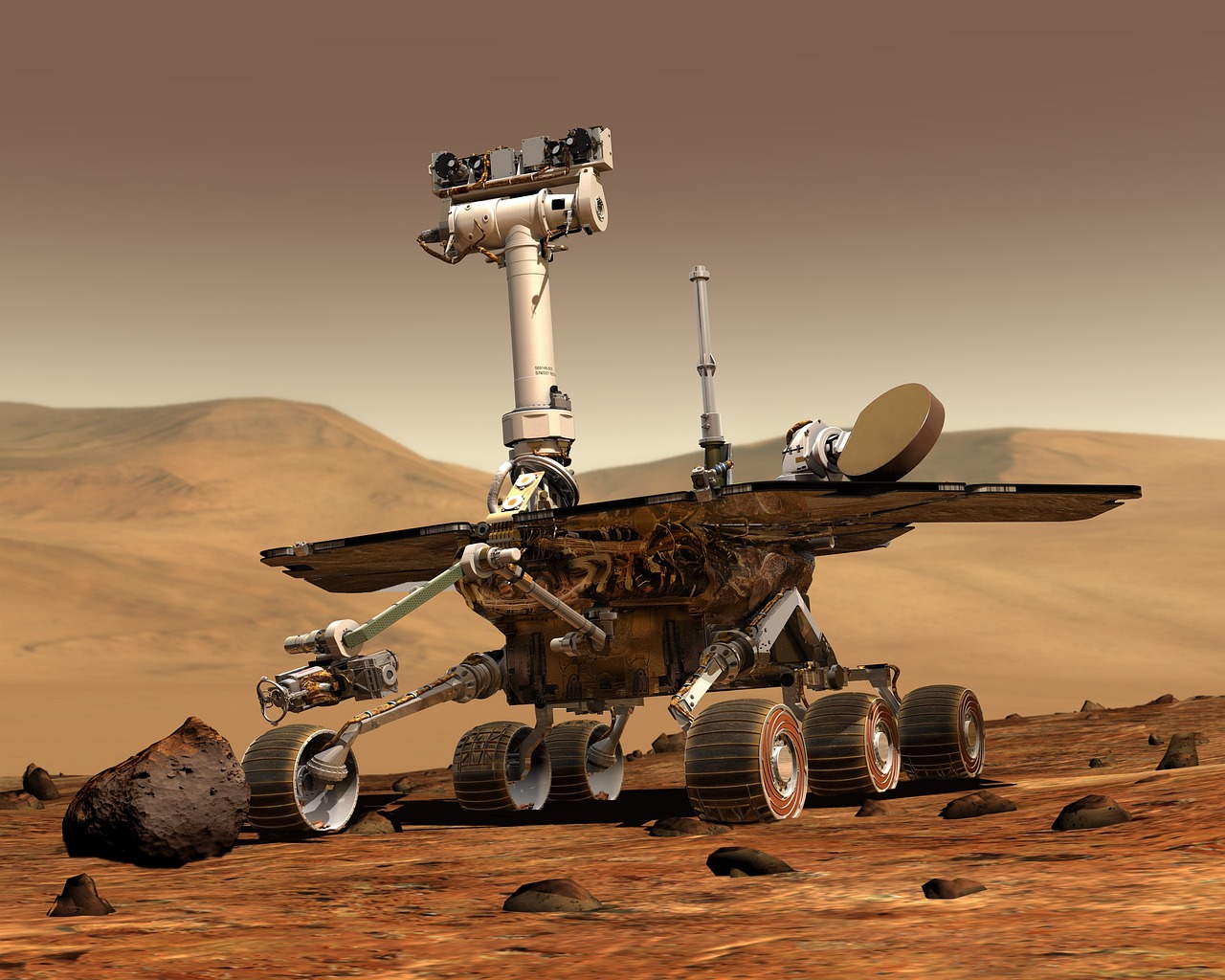
Consensus Mechanism
At the heart of Tron’s blockchain technology lies its unique Delegated Proof of Stake (DPoS) consensus mechanism. This innovative approach not only enhances the efficiency of transactions but also ensures a level of decentralization that is crucial for a blockchain network. In a world where speed and security are paramount, Tron's DPoS offers a compelling solution that sets it apart from traditional Proof of Work (PoW) systems.
So, what exactly is DPoS? Imagine a democratic voting system where stakeholders elect a small number of delegates to validate transactions and maintain the network. This is precisely how Tron's DPoS functions. Instead of relying on every node in the network to compete to solve complex mathematical problems, Tron allows users to vote for a limited number of representatives. These elected nodes, or super representatives, then take on the responsibility of confirming transactions and adding them to the blockchain.
This system significantly increases transaction speed and reduces latency. While traditional blockchains can become sluggish as they scale, Tron's DPoS can handle thousands of transactions per second. To illustrate, consider the following comparison:
| Consensus Mechanism | Transactions per Second (TPS) | Decentralization Level |
|---|---|---|
| Proof of Work (PoW) | 7 TPS | Moderate |
| Delegated Proof of Stake (DPoS) | 2000+ TPS | High |
As you can see, DPoS not only outperforms PoW in terms of speed but also maintains a commendable level of decentralization. This balance is crucial because it allows Tron to operate efficiently while still providing users with a sense of ownership and control over the network.
Furthermore, the DPoS mechanism encourages active participation from the community. Users are incentivized to vote for representatives who align with their interests, fostering a sense of engagement and responsibility. This dynamic creates a vibrant ecosystem where decisions are made collectively, rather than dictated by a central authority.
However, like any system, DPoS is not without its challenges. The reliance on a small group of elected nodes can lead to potential issues of centralization if not managed correctly. To mitigate this risk, Tron continuously emphasizes the importance of transparency and accountability among its super representatives, ensuring that they remain committed to the network's integrity.
In conclusion, Tron's DPoS consensus mechanism is a game-changer in the blockchain landscape. By prioritizing speed, efficiency, and community engagement, Tron is paving the way for a more decentralized and user-friendly internet. As the cryptocurrency world continues to evolve, Tron's innovative approach to consensus will undoubtedly play a pivotal role in shaping its future.
- What is the main advantage of Tron's DPoS over traditional PoW?
The main advantage is the significantly higher transaction speed and lower energy consumption, making it more efficient for users.
- How does voting for super representatives work?
Users can vote for their preferred super representatives using their TRX tokens, and the elected ones validate transactions on the network.
- Can DPoS lead to centralization?
Yes, if not managed properly, DPoS can lead to centralization. However, Tron emphasizes transparency and accountability to mitigate this risk.
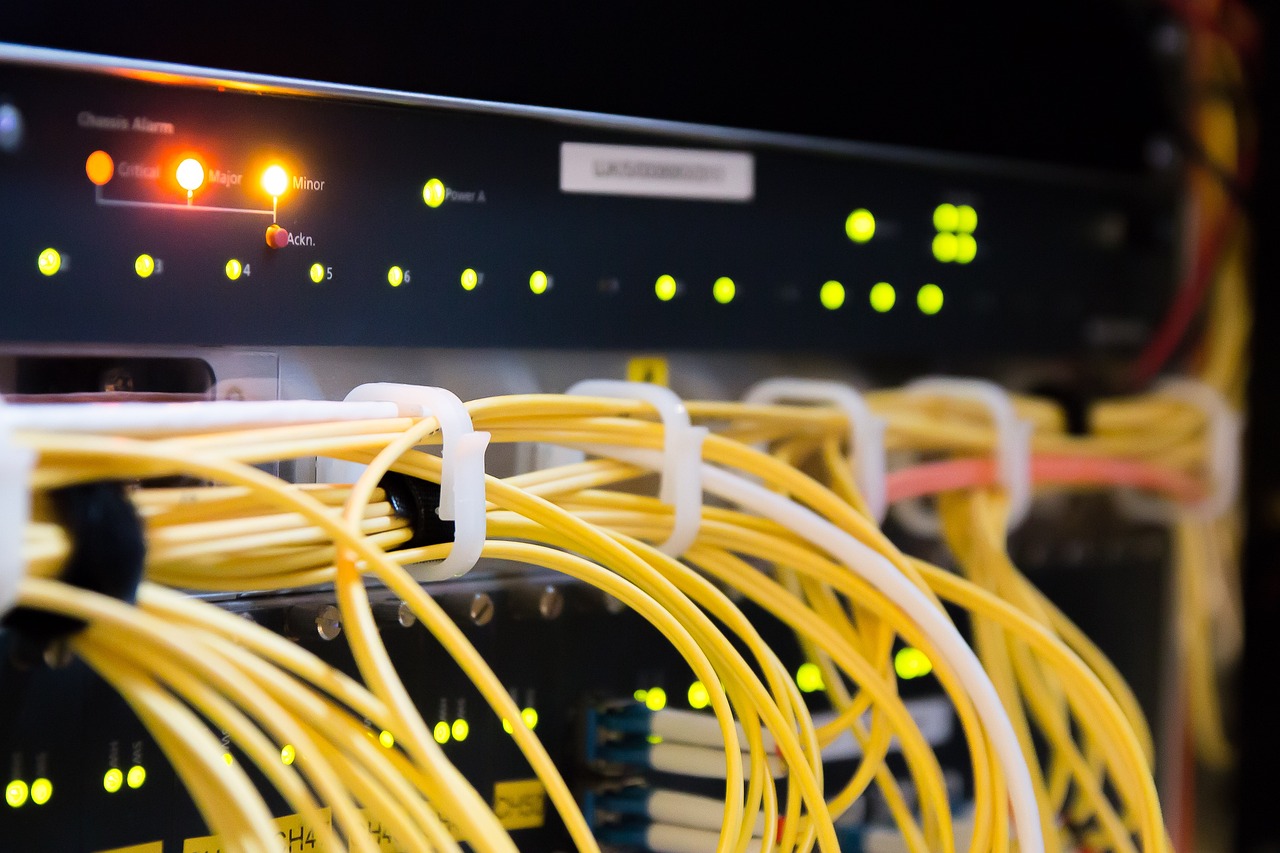
Node Structure
The node structure of Tron is a crucial element that underpins its Delegated Proof of Stake (DPoS) consensus mechanism, enhancing both performance and security. In simple terms, think of nodes as the backbone of the Tron network, where each node plays a specific role in maintaining the integrity and efficiency of the blockchain. Unlike traditional blockchain systems that rely heavily on a vast number of miners, Tron’s architecture allows for a more streamlined approach to transaction validation and block creation.
At its core, Tron's node structure consists of several types of nodes, each with distinct responsibilities:
- Super Representatives (SRs): These are the elite nodes elected by TRX holders. SRs are responsible for producing new blocks and validating transactions. Their performance is closely monitored, and they must maintain a good reputation to remain in power.
- Full Nodes: These nodes store the entire blockchain and validate transactions. They provide the necessary data for SRs and help in maintaining a decentralized network.
- Light Nodes: Designed for users who do not need to store the entire blockchain, light nodes connect to full nodes to access data while minimizing resource use.
This tiered structure not only fosters decentralization but also optimizes the network's overall performance. The SRs, being fewer in number, can quickly reach consensus, which leads to faster transaction times. This is particularly beneficial for applications that require real-time processing, such as gaming and content sharing platforms.
Moreover, the node structure enhances security. Since SRs are elected based on their performance and the trust of the community, they are incentivized to act in the network's best interest. This reduces the risk of malicious activities, as any SR that behaves irresponsibly risks losing its position and, consequently, its rewards.
In conclusion, Tron's node structure is a well-thought-out design that balances efficiency, security, and decentralization. By leveraging a select group of Super Representatives alongside a robust network of full and light nodes, Tron ensures that it can handle a high volume of transactions at lightning speed while maintaining a secure and reliable environment for its users.
What is the role of Super Representatives in Tron?
Super Representatives are elected nodes responsible for producing new blocks and validating transactions on the Tron network. They play a crucial role in maintaining the network's efficiency and security.
How does the node structure affect transaction speed?
Tron's node structure allows for quicker consensus due to the limited number of Super Representatives, which results in faster transaction processing compared to traditional blockchain systems.
Can anyone become a Super Representative?
Yes, any TRX holder can vote for their preferred candidates to become Super Representatives, making it a democratic process that encourages community involvement.
What are the differences between full nodes and light nodes?
Full nodes store the entire blockchain and validate transactions, while light nodes do not store the full blockchain but connect to full nodes to access necessary data.

Transaction Speed
When it comes to cryptocurrency, is often a make-or-break factor for users and developers alike. Imagine trying to buy a coffee with a cryptocurrency that takes minutes—or even hours—to process a transaction. Frustrating, right? This is where Tron (TRX) shines brightly in the crowded blockchain space. With its innovative architecture and cutting-edge technology, Tron boasts an impressive transaction speed that can handle thousands of transactions per second (TPS). In fact, Tron claims to achieve speeds of up to 2,000 TPS, making it one of the fastest blockchain platforms available today.
But how does Tron achieve such remarkable speed? The answer lies in its unique Delegated Proof of Stake (DPoS) consensus mechanism. Unlike traditional Proof of Work (PoW) systems, which require extensive computational power and time to validate transactions, DPoS allows for a more streamlined and efficient process. In a nutshell, Tron employs a system where super representatives are elected by TRX holders to validate transactions on the network. This not only speeds up the transaction process but also enhances the overall efficiency of the network.
Moreover, the low transaction fees associated with Tron further contribute to its appeal. Users can send and receive TRX with minimal costs, making it an attractive option for microtransactions and everyday use. For instance, while other blockchain platforms may charge hefty fees for transactions, Tron keeps its fees at an incredibly low rate, often fractionally priced. This affordability combined with speed makes Tron a viable choice for various applications, from gaming to finance.
To illustrate the comparison in transaction speeds among various blockchain platforms, here's a simple table:
| Blockchain Platform | Transaction Speed (TPS) | Average Transaction Fee |
|---|---|---|
| Bitcoin | 7 | $2.00 |
| Ethereum | 30 | $5.00 |
| Ripple | 1,500 | $0.0001 |
| Tron | 2,000 | $0.0001 |
As you can see, Tron not only competes with but often surpasses other leading blockchain platforms in terms of transaction speed. This capability is particularly significant for developers looking to create decentralized applications (dApps) that require quick and efficient transactions. Whether it's gaming, content sharing, or financial services, Tron's speed empowers developers to build innovative solutions without the bottlenecks typically associated with slower blockchains.
In conclusion, the transaction speed of Tron is one of its standout features, enabling it to cater to a wide range of applications while ensuring a seamless user experience. As the demand for fast and affordable transactions continues to rise in the cryptocurrency landscape, Tron's ability to deliver on this front positions it as a formidable player in the market.

Smart Contracts on Tron
When we talk about smart contracts, we're diving into one of the most exciting aspects of blockchain technology. Tron has made a significant mark in this arena by providing a robust framework for developers to create decentralized applications, or dApps, that run on its blockchain. But what exactly are smart contracts, and why should you care? Imagine a digital vending machine: you put in your money, select your item, and the machine automatically dispenses it without needing a middleman. That's the essence of a smart contract—self-executing agreements with the terms directly written into code.
Tron’s smart contracts are designed to be user-friendly and highly efficient, allowing developers to build applications that can handle a multitude of transactions seamlessly. One of the key features of Tron’s smart contracts is their compatibility with Ethereum’s ecosystem, which means that developers familiar with Ethereum can easily transition to Tron without having to learn a new programming language. This interoperability not only broadens the developer base but also enriches the Tron ecosystem with a variety of innovative applications.
Moreover, Tron's smart contracts are built on the Solidity programming language, which is widely used in the blockchain community. This makes it easier for developers to create complex and feature-rich applications that can cater to various industries, from finance to entertainment. The flexibility of Tron’s smart contracts allows for the creation of various types of dApps, including:
- Decentralized Finance (DeFi): Enabling users to lend, borrow, and trade assets without intermediaries.
- Gaming: Creating interactive games that reward players with cryptocurrency.
- Content Creation: Allowing artists and creators to monetize their work directly.
One of the most appealing aspects of using smart contracts on Tron is the speed at which transactions are processed. With Tron’s high throughput, smart contracts can execute rapidly, which is crucial for applications that require immediate responses, such as gaming and trading platforms. This speed is complemented by low transaction fees, making it economically viable for developers to deploy their applications.
As the demand for decentralized solutions continues to grow, the role of smart contracts on Tron will likely expand, leading to even more innovative applications. The potential for creating decentralized applications that can reshape industries is enormous. Whether it's through enhancing transparency in supply chains or providing fair compensation to content creators, Tron's smart contracts are paving the way for a new era of digital interaction.
In conclusion, Tron's approach to smart contracts not only simplifies the development process but also enhances the functionality of decentralized applications. With its focus on speed, efficiency, and user-friendliness, Tron is well-positioned to lead the charge in the world of smart contracts, making it a platform worth watching in the evolving cryptocurrency landscape.

Use Cases of Tron
Tron (TRX) is not just another cryptocurrency; it's a platform that is reshaping the digital landscape with its innovative use cases. Imagine a world where content creators are rewarded fairly for their contributions, gamers can own their in-game assets, and financial transactions are seamless and efficient. Tron is making this vision a reality. With its robust blockchain technology, Tron offers a variety of applications that cater to different industries, showcasing its versatility in the ever-evolving digital ecosystem.
One of the most exciting areas where Tron is making a significant impact is in the gaming industry. Traditional gaming platforms often have centralized control, which can limit player ownership and lead to unfair monetization practices. However, with Tron, game developers can create decentralized games where players truly own their assets. This means that items earned in-game can be traded or sold on the open market, empowering players and creating a vibrant economy around gaming. For instance, through Tron's platform, developers can launch games that utilize non-fungible tokens (NFTs), allowing players to buy, sell, and trade unique in-game items securely.
But gaming is just the tip of the iceberg. Tron is also revolutionizing content sharing platforms. In today's digital age, content creators often struggle to receive fair compensation for their work due to the high fees charged by intermediaries. Tron addresses this issue head-on by enabling a decentralized content ecosystem. By utilizing smart contracts, content creators can directly monetize their work without the need for middlemen. This not only ensures that creators receive a larger share of the revenue but also allows for greater transparency in how content is distributed and consumed. Imagine a musician releasing a new album and earning a fair profit directly from their fans without any cuts taken by streaming services.
Moreover, Tron's blockchain technology facilitates various financial applications. With its high transaction speed and low fees, Tron is an attractive option for decentralized finance (DeFi) projects. Users can engage in lending, borrowing, and trading without the traditional barriers imposed by banks. This opens up financial services to a broader audience, especially in regions where access to banking is limited. By leveraging Tron's capabilities, developers can create DeFi applications that are not only efficient but also accessible to everyone.
In summary, Tron's use cases span across multiple sectors, including:
- Gaming: Decentralized platforms that empower players and developers.
- Content Sharing: Fair compensation for creators through direct monetization.
- Finance: Efficient DeFi applications that democratize access to financial services.
As Tron continues to evolve, its potential applications will likely expand even further. The platform is not just a technological marvel; it's a movement towards a more equitable and decentralized digital world. By embracing these innovative use cases, Tron is paving the way for a future where users have more control over their digital lives. The possibilities are endless, and the journey has only just begun.
Q: What is Tron primarily used for?
A: Tron is primarily used for decentralized applications (dApps), gaming, content sharing, and financial services.
Q: How does Tron ensure fair compensation for content creators?
A: Tron uses smart contracts to allow creators to monetize their work directly, eliminating intermediaries and ensuring they receive a larger share of the revenue.
Q: Is Tron a good investment?
A: As with any investment, it’s essential to do thorough research and consider market conditions. Tron has shown potential, but like all cryptocurrencies, it carries risks.
Q: How fast can transactions be processed on the Tron network?
A: Tron boasts high transaction speeds, capable of processing thousands of transactions per second, making it one of the fastest blockchain platforms available.
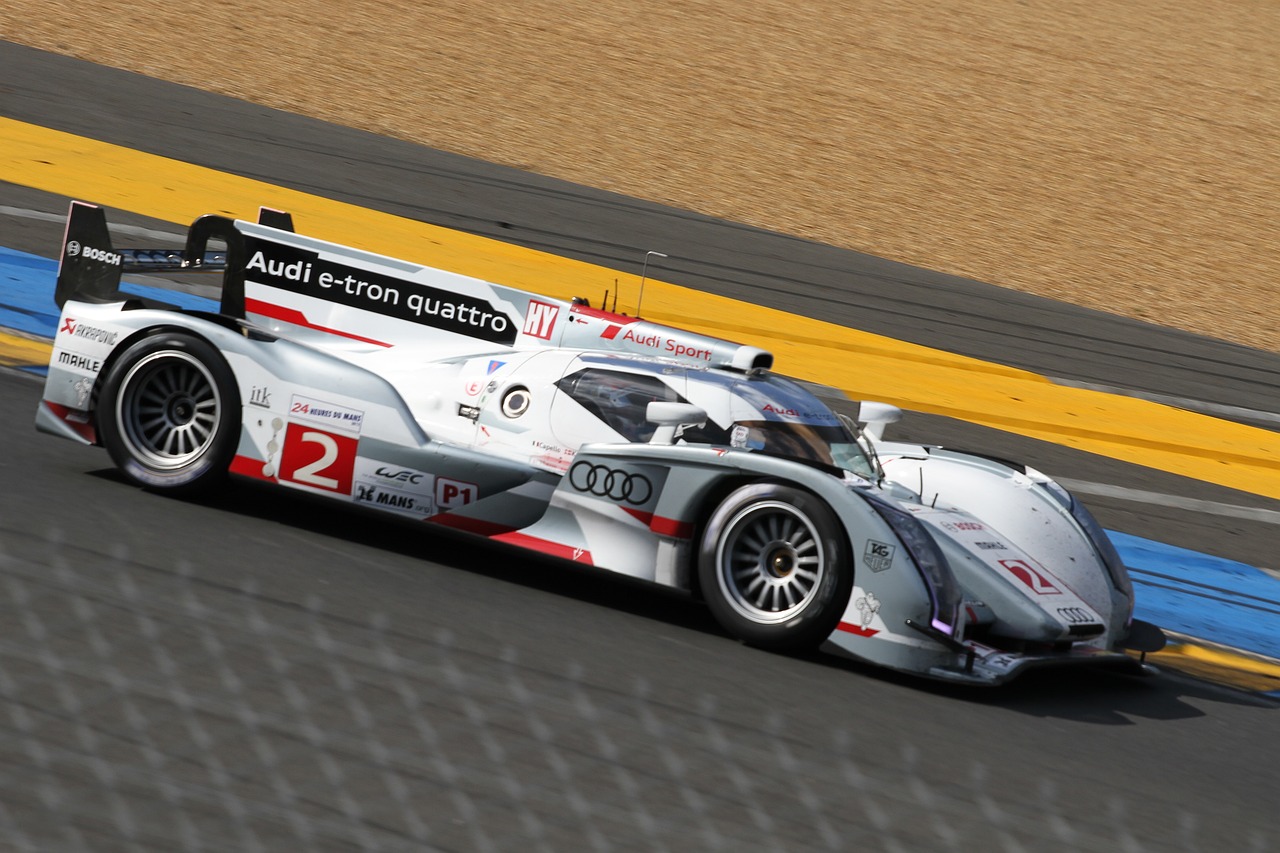
Gaming Applications
Tron is making waves in the gaming industry, and it's not just a ripple—it's a full-blown tsunami! With its robust blockchain technology, Tron provides a platform where game developers can create decentralized applications (dApps) that are not only engaging but also fair and transparent. Imagine a world where players have true ownership of their in-game assets, and developers can create games without the fear of censorship or unfair monetization practices. That’s the kind of revolution Tron is bringing to the gaming landscape.
One of the standout features of Tron in the gaming sector is its fast transaction speeds. Traditional gaming platforms often struggle with lag and latency, especially during peak times. However, Tron’s blockchain is designed to handle thousands of transactions per second, which means players can enjoy a seamless gaming experience without frustrating delays. This speed is crucial for real-time gaming experiences, where every millisecond counts.
Moreover, the decentralized nature of Tron ensures that players can truly own their digital assets. In many conventional games, players invest time and money into acquiring rare items, only to find that they don’t actually own them. With Tron, players can buy, sell, and trade their assets on a blockchain, giving them real value. This concept is similar to owning a piece of art—once you own it, you can do whatever you want with it, whether that means showcasing it, selling it, or trading it for something else.
Furthermore, Tron’s ecosystem has attracted a variety of gaming projects that are pushing the boundaries of what’s possible. For instance, games like TronBet and CryptoKitties have leveraged Tron's technology to create unique gaming experiences that reward players with cryptocurrency. These games not only entertain but also empower players by integrating financial incentives into gameplay. Players can earn TRX (Tron’s native cryptocurrency) simply by participating, which adds an exciting layer to the gaming experience.
To give you a clearer picture, here’s a quick overview of some popular gaming projects on the Tron platform:
| Game Name | Type | Unique Feature |
|---|---|---|
| TronBet | Casino | Decentralized gambling with provably fair results |
| CryptoKitties | Collectible | Breed and trade virtual cats |
| TRON Arcade | Gaming Hub | Supports a variety of dApps for gaming |
As we look ahead, it's clear that Tron is positioning itself as a major player in the gaming industry. The combination of decentralization, speed, and true ownership of assets is a game-changer for both developers and players. In a world where digital experiences are becoming increasingly important, Tron’s innovative approach could redefine how we think about gaming.
- What is Tron? - Tron is a blockchain-based platform that aims to create a decentralized internet and empower content creators.
- How does Tron benefit gamers? - Tron offers fast transaction speeds, true ownership of digital assets, and a decentralized environment for game development.
- What types of games can be built on Tron? - Developers can create a wide range of games, including casinos, collectible games, and interactive experiences.
- Is Tron secure for gaming? - Yes, Tron's blockchain employs advanced security measures to ensure a safe gaming environment.
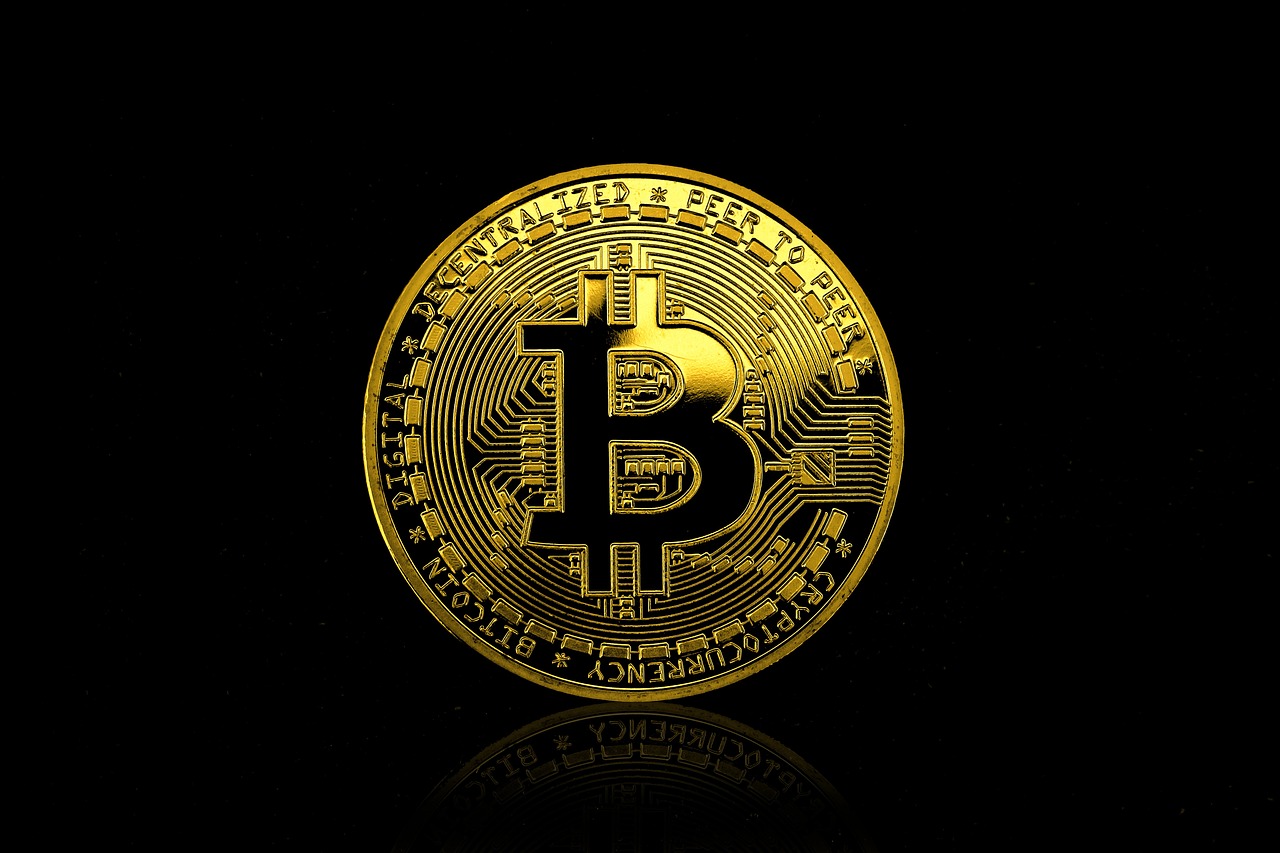
Content Sharing Platforms
In today's digital age, content is king. But let’s face it, the traditional content sharing platforms often leave creators feeling like they’re stuck in a maze, navigating through endless algorithms and unfair monetization schemes. This is where Tron steps in, shaking things up with its decentralized approach. By leveraging blockchain technology, Tron empowers content creators, ensuring they retain ownership and receive fair compensation for their work. Imagine a world where artists, writers, and musicians can share their creations directly with their audience, without having to go through a middleman who takes a hefty cut. Sounds like a dream, right? Well, Tron is making that dream a reality!
Tron's content sharing platforms utilize smart contracts, allowing creators to set their own terms and conditions. This means they can determine how much they want to charge for their content, whether it's a one-time payment, a subscription model, or even a pay-per-view system. The possibilities are endless! For instance, a musician could release an album on Tron's platform, and fans could purchase it directly, with the transactions recorded securely on the blockchain. This not only enhances transparency but also builds trust between creators and their audience.
Moreover, Tron's ecosystem supports various types of digital content, from videos and music to articles and artwork. This versatility is crucial because it allows creators from different fields to find their niche within the platform. Additionally, since transactions are processed quickly and with minimal fees, creators can focus on what they do best: creating! The low-cost nature of transactions means that even microtransactions become feasible, enabling fans to support their favorite creators with small contributions.
To illustrate the impact of Tron on content sharing, let’s take a look at a few key benefits:
- Ownership and Control: Creators maintain full control over their content, ensuring they are not exploited by large corporations.
- Fair Compensation: With smart contracts, creators can receive immediate payment for their work, avoiding long payment cycles typical in traditional platforms.
- Global Reach: Tron’s decentralized nature allows creators to reach a global audience without geographical barriers.
Furthermore, Tron's focus on community engagement means that creators can interact directly with their fans, fostering a sense of connection and loyalty. Imagine being able to chat with your favorite artist or receive exclusive content just for being a loyal supporter! This kind of interaction is not only enriching for fans but also provides invaluable feedback for creators.
As we look to the future, the potential for Tron's content sharing platforms seems limitless. With ongoing advancements in blockchain technology and increasing user adoption, we can expect to see more creators flocking to Tron to share their work. This shift could ultimately redefine the content sharing landscape, making it more equitable and accessible for all. So, whether you’re a budding artist or an established creator, Tron offers a promising avenue to explore!
Q1: How does Tron ensure fair compensation for content creators?
A1: Tron utilizes smart contracts, allowing creators to set their own payment terms and receive immediate compensation for their work.
Q2: Can all types of digital content be shared on Tron?
A2: Yes! Tron supports a wide range of digital content, including videos, music, articles, and artwork.
Q3: What are the transaction fees like on Tron's platform?
A3: Transaction fees on Tron are minimal, making it feasible for creators to engage in microtransactions with their fans.
Q4: How does Tron help creators connect with their audience?
A4: Tron fosters direct interaction between creators and fans, allowing for a more personal and engaging experience.
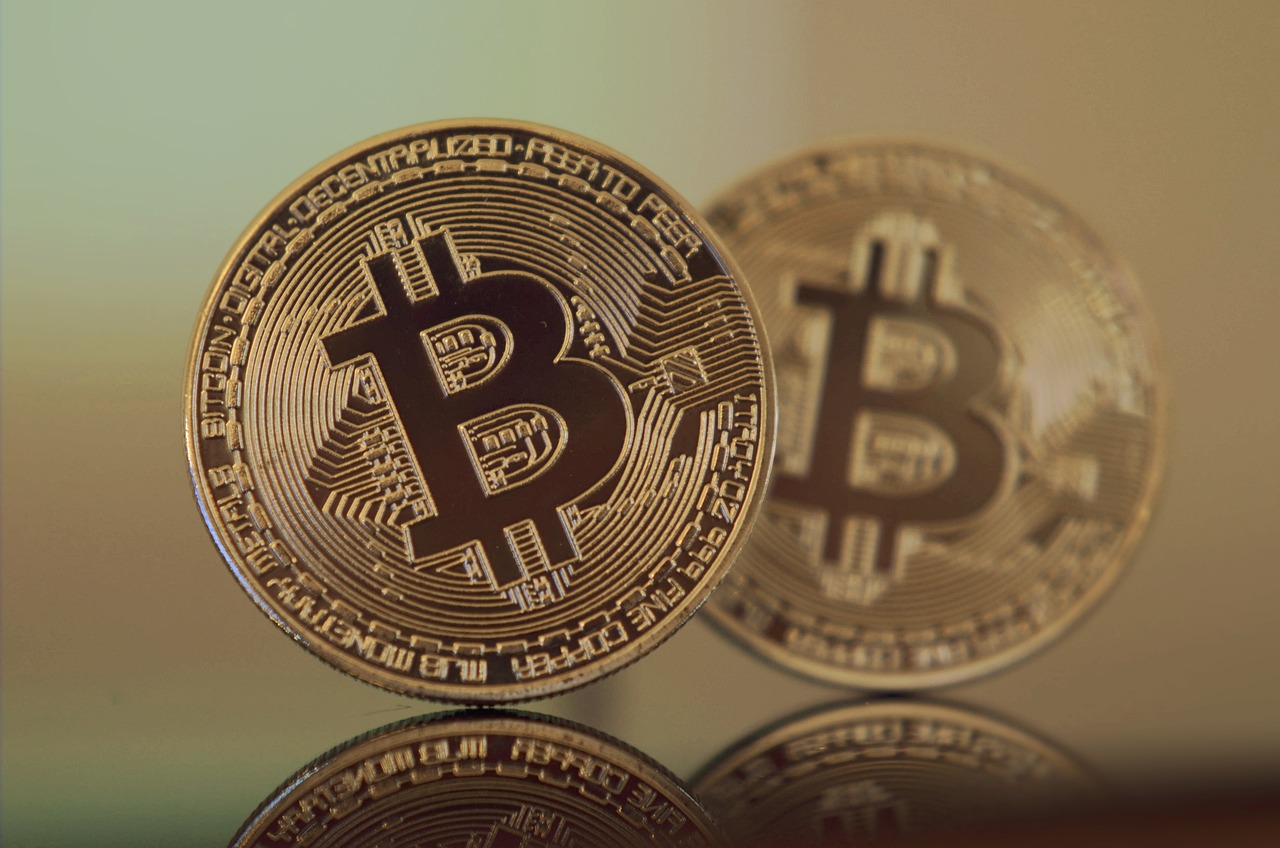
Market Performance and Adoption
Tron (TRX) has made significant waves in the cryptocurrency market since its launch in 2017. As a project aimed at creating a decentralized internet, its market performance is a testament to its growing acceptance and adoption among users and developers alike. Over the years, TRX has experienced a rollercoaster of price movements, reflecting the volatile nature of the crypto world. However, it has also shown resilience and potential for growth, making it a noteworthy player in the digital currency landscape.
One of the key factors influencing Tron's market performance is its robust community engagement and developer support. The Tron Foundation has fostered an active ecosystem that encourages innovation and collaboration. This community-driven approach has not only helped in maintaining a steady influx of new projects but has also attracted investors looking for promising opportunities in the blockchain space.
To give you a clearer picture, let's take a look at some historical price trends of TRX:
| Year | Price (USD) | Market Cap (USD) |
|---|---|---|
| 2017 | $0.002 | $100 million |
| 2018 | $0.25 | $17 billion |
| 2019 | $0.02 | $1.4 billion |
| 2020 | $0.03 | $2 billion |
| 2021 | $0.15 | $10 billion |
As you can see from the table, TRX has experienced significant fluctuations in its price and market capitalization. The peak in 2018 was particularly notable, as it coincided with a broader market rally that saw many cryptocurrencies reach all-time highs. However, the subsequent decline in 2019 was a reminder of the inherent volatility in the crypto market.
Another crucial aspect of Tron's adoption is its versatility in various sectors. The platform has made strides in the gaming and content-sharing industries, which has helped to increase its user base. The decentralized applications (dApps) built on Tron are attracting attention, and with the rise of the creator economy, Tron's ability to empower content creators has positioned it well for future growth.
In terms of developer engagement, Tron has established several initiatives to encourage the development of new applications. The Tron Accelerator program, for instance, provides funding and support for developers creating innovative dApps on the platform. This initiative not only boosts the number of projects but also enhances the overall quality of applications available to users.
As we look to the future, it’s clear that Tron is positioning itself as a leader in the blockchain space. However, it will need to navigate various challenges, including regulatory scrutiny and competition from other blockchain platforms. The ability to adapt and innovate will be key to maintaining its market position and continuing to attract users and developers alike.
- What is Tron (TRX)? Tron is a blockchain-based platform that aims to create a decentralized internet, allowing users to share content directly without intermediaries.
- How does Tron achieve high transaction speeds? Tron uses a Delegated Proof of Stake (DPoS) consensus mechanism, which allows for faster transaction processing compared to traditional blockchain systems.
- What are the primary use cases for Tron? Tron is primarily used in gaming, content sharing, and finance, providing a platform for developers to create decentralized applications.
- How has Tron performed in the market? Tron has experienced significant price fluctuations since its launch, with notable peaks and valleys influenced by broader market trends.

Price Trends
The price trends of Tron (TRX) have been nothing short of a rollercoaster ride, captivating both investors and enthusiasts alike. Since its inception in 2017, TRX has experienced significant fluctuations, reflecting the volatile nature of the cryptocurrency market. Initially launched at a mere fraction of a cent, Tron quickly gained traction, reaching an all-time high of approximately $0.30 in early 2018. This surge was fueled by widespread interest in blockchain technology and the promise of a decentralized internet. However, like many cryptocurrencies, TRX faced a downward trend in the following years, dropping to around $0.01 in late 2019.
As we analyze the price movements over the years, it's essential to consider the various factors that have influenced these trends. Market sentiment, technological advancements, and regulatory developments play pivotal roles in shaping the value of TRX. For instance, the announcement of partnerships with notable companies and the launch of innovative projects on the Tron network often lead to spikes in price. Conversely, negative news, such as regulatory scrutiny or security breaches, can trigger sharp declines.
To provide a clearer picture, let’s take a look at a brief overview of TRX's price trends over the past few years:
| Year | Price (USD) | Market Sentiment |
|---|---|---|
| 2017 | $0.002 | Initial Launch |
| 2018 | $0.30 | All-Time High |
| 2019 | $0.01 | Market Correction |
| 2020 | $0.03 | Gradual Recovery |
| 2021 | $0.15 | Resurgence in Interest |
As we move into 2023, the price of TRX has shown signs of stabilization, hovering around the $0.05 mark. This stability can be attributed to the growing adoption of decentralized applications (dApps) on the Tron network and the increasing interest in blockchain technology. Moreover, the active community and developer engagement have contributed significantly to maintaining a positive outlook for TRX.
In conclusion, while the price trends of Tron have been marked by volatility, the overall trajectory appears promising. With ongoing developments and a commitment to enhancing its platform, TRX is well-positioned to navigate the challenges of the cryptocurrency market. Investors and enthusiasts alike should keep a close eye on market trends and potential catalysts that could influence the price of TRX in the future.
- What factors influence the price of Tron (TRX)?
The price of TRX is influenced by market sentiment, technological advancements, regulatory developments, and overall trends in the cryptocurrency market. - Is Tron a good investment?
Like any investment, TRX carries risks. It's crucial to conduct thorough research and consider market conditions before investing. - How does Tron compare to other cryptocurrencies?
Tron focuses on creating a decentralized internet and offers unique features like high transaction speeds and low fees, setting it apart from many other cryptocurrencies.
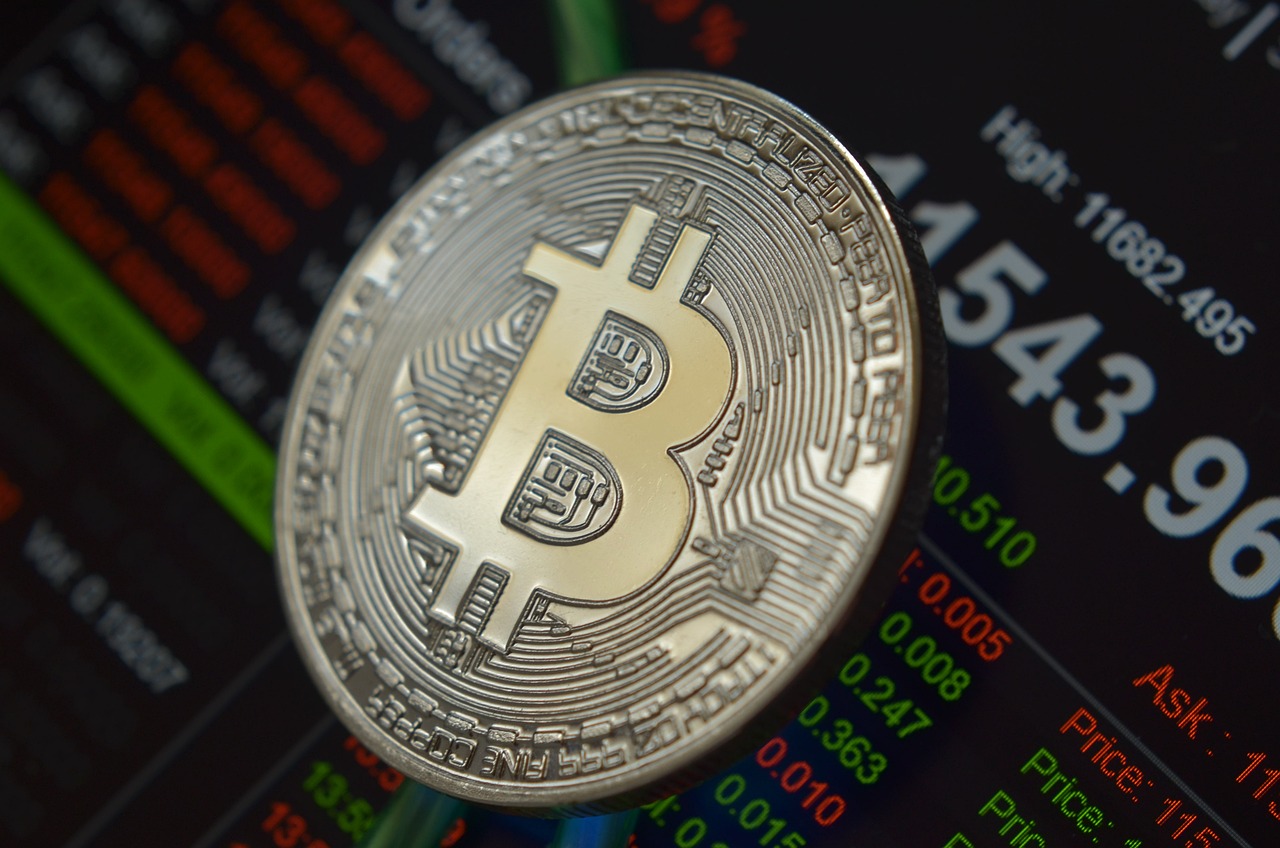
Community and Developer Engagement
When it comes to the world of cryptocurrencies, having an active and engaged community is vital for success, and Tron (TRX) is no exception. The Tron community is a vibrant and passionate group of individuals who are committed to the vision of a decentralized internet. They don't just sit on the sidelines; they actively participate in discussions, share insights, and contribute to the ecosystem's growth. This engagement is not just about enthusiasm; it's about building a robust foundation that supports innovation and development.
One of the standout features of Tron is its commitment to empowering developers. The Tron Foundation has created a supportive environment where developers can thrive. Through various initiatives, including hackathons, workshops, and grants, Tron encourages developers to create decentralized applications (dApps) on its platform. This proactive approach not only fosters creativity but also ensures that the ecosystem remains dynamic and responsive to user needs.
The Tron community is also instrumental in promoting the platform. Community members share their experiences, successes, and challenges on social media, forums, and other platforms. This grassroots marketing is invaluable, as it helps attract new users and developers to the ecosystem. Moreover, the community actively engages in educational efforts, providing resources and tutorials that make it easier for newcomers to understand how Tron works and how they can contribute.
To further illustrate the engagement levels within the Tron community, let’s take a look at some key statistics:
| Metric | Value |
|---|---|
| Active Developers | Over 1,000 |
| Community Members (Social Media) | Over 2 million |
| Decentralized Applications (dApps) on Tron | Over 1,500 |
These numbers speak volumes about the level of engagement and interest in Tron. With a thriving community and a solid base of developers, Tron is well-positioned to continue its growth trajectory. The synergy between the community and developers creates a feedback loop that drives innovation. Developers receive direct input from users, allowing them to create solutions that are not only technically sound but also aligned with user expectations.
In conclusion, the strength of Tron's community and developer engagement cannot be overstated. It is this very engagement that fuels the platform's evolution, ensuring that it remains relevant and competitive in the ever-changing cryptocurrency landscape. With a dedicated group of individuals working together towards a common goal, Tron is set to make significant strides in the future.
- What is Tron (TRX)? Tron is a blockchain-based platform that aims to build a decentralized internet through the use of blockchain technology.
- How does Tron support developers? Tron supports developers through various initiatives, including hackathons, grants, and educational resources to create decentralized applications.
- What are the benefits of being part of the Tron community? Being part of the Tron community offers networking opportunities, access to resources, and the ability to contribute to a growing ecosystem.
- How does Tron ensure decentralization? Tron uses a Delegated Proof of Stake (DPoS) consensus mechanism, which enhances decentralization while ensuring high transaction speeds.

Future Prospects of Tron
As we look ahead in the ever-evolving landscape of cryptocurrency, the future prospects of Tron (TRX) appear both promising and challenging. With its ambitious mission to create a decentralized internet, Tron is poised to play a significant role in the digital ecosystem. However, like any other cryptocurrency, it faces a myriad of challenges that could impact its growth trajectory.
One of the most pressing challenges is the increasing regulatory scrutiny that cryptocurrencies are experiencing globally. Governments are still grappling with how to regulate digital currencies, and Tron is no exception. If regulations become overly stringent, they could stifle innovation and limit the use of Tron’s technology. On the flip side, if Tron can navigate these regulatory waters effectively, it might emerge as a leader in compliance, setting a benchmark for other cryptocurrencies.
Another challenge is the fierce competition within the blockchain space. Platforms like Ethereum, Binance Smart Chain, and Solana are continuously enhancing their features and attracting developers. To maintain its edge, Tron must not only innovate but also ensure that its platform remains user-friendly and efficient. The community and developer engagement will be crucial in driving these innovations and keeping the platform relevant.
Despite these challenges, there are numerous opportunities for growth on the horizon. For starters, Tron has the potential to forge strategic partnerships that can enhance its ecosystem. Collaborating with established companies in finance, gaming, and content sharing can open new avenues for adoption and integration. Additionally, as more businesses look to leverage blockchain technology, Tron's capabilities in supporting dApps could lead to increased demand for its platform.
Technological advancements also present a significant opportunity. As blockchain technology continues to evolve, Tron can capitalize on emerging trends such as interoperability and layer-2 solutions. By adopting and integrating these technologies, Tron can enhance its scalability and performance, making it an attractive option for developers and users alike.
Moreover, the expanding use cases for Tron in various sectors, from gaming to finance, highlight its versatility. The gaming industry, in particular, has shown a keen interest in decentralized platforms, and Tron is well-positioned to cater to this demand. By providing developers with tools to create engaging and rewarding gaming experiences, Tron can solidify its presence in this lucrative market.
In conclusion, while the road ahead for Tron is fraught with challenges, the opportunities for growth are equally significant. By focusing on innovation, community engagement, and strategic partnerships, Tron can navigate the complexities of the cryptocurrency landscape and continue to thrive. As the digital world becomes more interconnected, Tron’s vision of a decentralized internet could very well become a reality.
- What is Tron (TRX)? Tron is a blockchain-based platform aimed at creating a decentralized internet, allowing users to share and own their content.
- How does Tron achieve high transaction speeds? Tron utilizes a Delegated Proof of Stake (DPoS) consensus mechanism, which enhances transaction speed and network efficiency.
- What are some use cases for Tron? Tron is primarily used in gaming, content sharing, and financial applications, providing a versatile platform for developers.
- What challenges does Tron face? Key challenges include regulatory scrutiny and competition from other blockchain platforms.
- What opportunities lie ahead for Tron? Potential growth areas include strategic partnerships, technological advancements, and expanding use cases across various sectors.
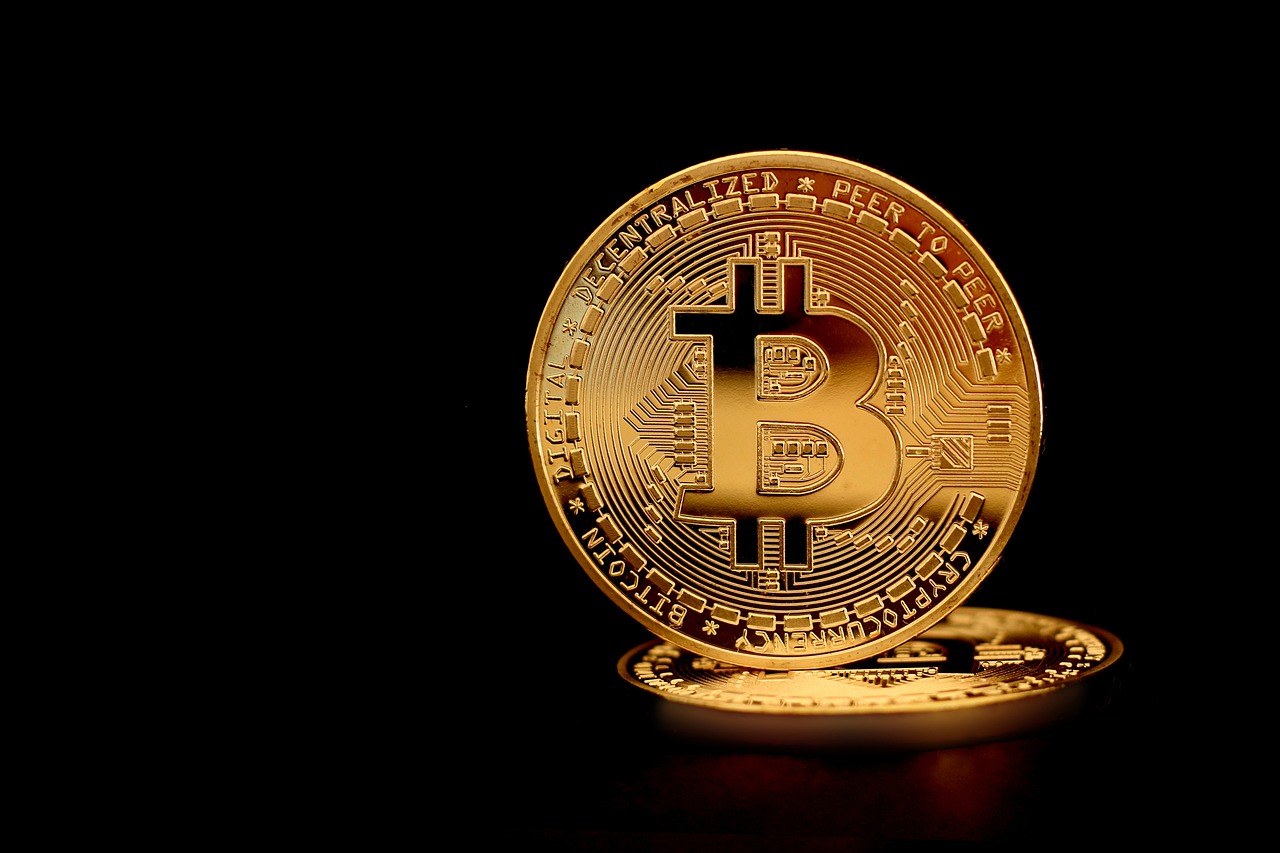
Challenges Ahead
As Tron (TRX) continues to make waves in the cryptocurrency landscape, it faces a myriad of challenges that could shape its future trajectory. One of the most pressing issues is the regulatory environment. As governments around the world grapple with how to regulate cryptocurrencies, Tron must navigate a complex web of laws and regulations that can vary significantly from one jurisdiction to another. This uncertainty can hinder innovation and deter potential investors who might be wary of entering a space that could be subject to sudden regulatory changes.
Another significant challenge is the intense competition within the blockchain space. With numerous platforms vying for dominance, Tron is up against established players like Ethereum and newer entrants with innovative solutions. Each of these platforms offers unique features that can attract developers and users alike. For instance, Ethereum’s robust ecosystem and established developer community present a formidable challenge for Tron as it seeks to carve out its niche.
Furthermore, Tron must address scalability issues that may arise as its user base grows. While its current infrastructure supports high transaction speeds, the demand for decentralized applications (dApps) could strain the network. If Tron cannot maintain its performance under increased load, it risks losing users and developers to more scalable alternatives. The balance between decentralization and scalability is a delicate one, and finding that sweet spot is crucial for Tron's long-term success.
Additionally, the perception of decentralization can be a double-edged sword. While Tron's Delegated Proof of Stake (DPoS) mechanism enhances transaction speeds, it can also lead to concerns about centralization. Critics argue that having a limited number of super representatives can create a scenario where power is concentrated in the hands of a few, undermining the core principles of decentralization that many cryptocurrency enthusiasts value. This perception can affect user trust and, ultimately, adoption rates.
Lastly, as Tron pushes forward, it must also contend with security vulnerabilities. Like any blockchain platform, Tron is susceptible to hacks and exploits that could compromise user funds and data. Ensuring robust security measures are in place is paramount. The community's trust hinges on the platform's ability to safeguard its users against potential breaches.
In conclusion, while Tron has a promising future ahead, it is imperative for the team behind it to address these challenges proactively. By navigating regulatory hurdles, staying competitive, ensuring scalability, maintaining decentralization, and bolstering security, Tron can position itself as a leader in the ever-evolving cryptocurrency landscape.
- What is Tron (TRX)?
Tron is a blockchain-based platform designed to build a decentralized internet, enabling users to share content and applications without intermediaries. - How does Tron achieve high transaction speeds?
Tron utilizes a Delegated Proof of Stake (DPoS) consensus mechanism, allowing it to process transactions quickly and efficiently. - What are the main use cases for Tron?
Tron is widely used in gaming, content sharing, and finance, providing a versatile platform for developers and users. - What challenges does Tron face?
Tron faces regulatory challenges, intense competition, scalability issues, concerns about decentralization, and potential security vulnerabilities. - What is the future outlook for Tron?
The future of Tron looks promising, with numerous opportunities for growth, but it must navigate its challenges effectively.
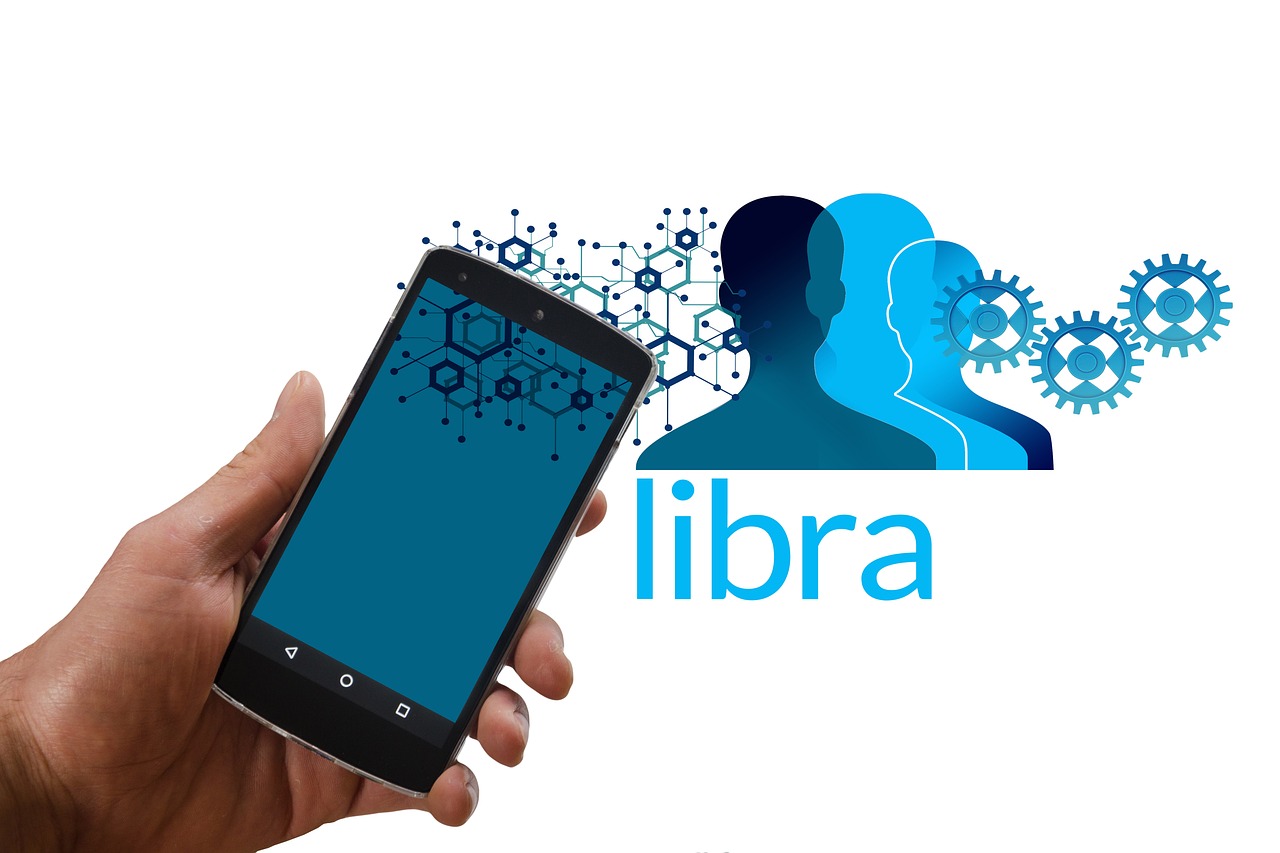
Opportunities for Growth
As we gaze into the crystal ball of Tron’s future, the opportunities for growth seem as vast as an ocean. With its robust technology and a dedicated community, Tron is well-positioned to capture a larger share of the blockchain market. One of the most exciting prospects lies in partnerships. Collaborating with established companies in various sectors can significantly enhance Tron's visibility and utility. Imagine a world where Tron powers the backend of major gaming platforms or content-sharing sites, making transactions seamless and efficient. Such partnerships could not only bolster Tron's market presence but also introduce its technology to a broader audience.
Furthermore, the technological advancements within the Tron ecosystem are a goldmine for growth. As the blockchain space evolves, so do the demands of developers and users alike. Tron has the potential to innovate by improving its smart contract capabilities, enhancing security features, and optimizing its scalability further. By staying ahead of the curve, Tron can attract more developers to build decentralized applications (dApps) on its platform, thus enriching its ecosystem.
Another area ripe for exploration is the expansion of use cases across various sectors. While Tron has made significant strides in gaming and content sharing, other industries such as finance, supply chain, and healthcare are also looking for decentralized solutions. By tailoring its technology to meet the specific needs of these sectors, Tron can open up new avenues for adoption. For instance, consider how blockchain can streamline supply chain processes, ensuring transparency and traceability. Tron’s infrastructure could be the backbone of such innovations, paving the way for a more decentralized economy.
Moreover, the growing interest in decentralized finance (DeFi) presents a golden opportunity for Tron. With more users seeking alternatives to traditional financial systems, Tron can leverage its fast transaction speeds and low fees to become a key player in the DeFi space. By developing platforms for lending, borrowing, and trading, Tron can attract a diverse user base that values efficiency and lower costs.
In summary, the opportunities for growth within the Tron ecosystem are not just potentialities; they are tangible paths that can lead to significant advancements. With strategic partnerships, continuous technological innovation, and a focus on expanding use cases, Tron is poised to make a lasting impact in the cryptocurrency landscape. The question is, will it seize these opportunities and ride the wave of growth, or will it let them slip away?
- What is Tron (TRX)? Tron is a blockchain-based platform designed to create a decentralized internet, allowing users to share content and applications without intermediaries.
- How does Tron achieve high transaction speeds? Tron utilizes a Delegated Proof of Stake (DPoS) consensus mechanism, enabling faster transaction processing and lower fees.
- What are some use cases for Tron? Tron is used in various applications, including gaming, content sharing, and decentralized finance (DeFi).
- What are the future prospects for Tron? Tron has numerous growth opportunities through partnerships, technological advancements, and expanding its use cases across different industries.
Frequently Asked Questions
- What is Tron (TRX) and what makes it unique?
Tron (TRX) is a blockchain-based platform designed to create a decentralized internet. What sets it apart is its focus on content sharing and entertainment, allowing users to publish, store, and own data without intermediaries. This empowers creators and enhances user control over their digital assets.
- How does Tron's Delegated Proof of Stake (DPoS) work?
Tron's DPoS mechanism allows TRX holders to vote for "super representatives" who validate transactions and maintain the network. This system enhances transaction speed and efficiency while ensuring decentralization, making it a more scalable solution compared to traditional proof-of-work systems.
- What are the primary use cases of Tron?
Tron has a wide range of applications, particularly in gaming, content sharing, and finance. It provides decentralized platforms for game developers, allowing for innovative gaming experiences. Additionally, it empowers content creators by ensuring fair compensation and ownership of their digital content.
- How does Tron achieve high transaction speeds?
Tron achieves impressive transaction speeds by utilizing its DPoS consensus mechanism, which allows for quick block confirmations. This results in low fees and the ability to handle a large volume of transactions, making it ideal for applications that require high throughput.
- What factors influence Tron's market performance?
Tron's market performance is influenced by various factors, including overall cryptocurrency market trends, community engagement, technological developments, and partnerships. Price trends can also be impacted by investor sentiment and regulatory news affecting the broader crypto landscape.
- What challenges does Tron face in the future?
While Tron has significant potential, it faces challenges such as regulatory scrutiny and fierce competition from other blockchain platforms. Additionally, maintaining a balance between decentralization and scalability can be a complex task as the network grows.
- Are there opportunities for growth in Tron?
Absolutely! Tron has numerous opportunities for growth, including potential partnerships with established companies, advancements in technology, and expanding its use cases across various sectors. As the demand for decentralized applications increases, Tron is well-positioned to capitalize on this trend.



















